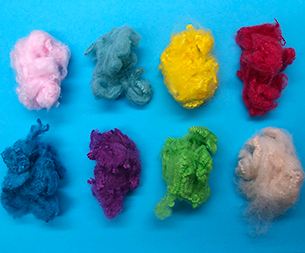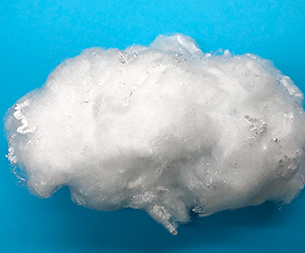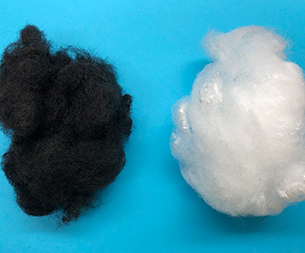The production process of polypropylene staple fiber seems simple and convenient, but the actual operation is slightly careless, which has a greater impact on its production products, such as the problem of excessive elongation of polypropylene staple fiber, excessive elongation of polypropylene staple fiber will bring a lot of harm, and blending will also affect the strength of yarn, so, the following to understand what categories of polypropylene staple fiber can be divided into!
Polypropylene staple fiber features: acrylic short fiber density is small, light texture, can float on the water; Acrylic yarn has high strength and strong tensile strength. Acrylic fiber acid and alkali resistance, seawater immersion worry free; Acrylic fiber hygroscopicity is small, almost no hygroscopicity; Polypropylene staple fiber is an environmentally friendly and pollution-free product.
Polypropylene staple fiber is made of polypropylene as raw material, through melting, stretching, spinning, cutting and other processes. In the process of making polypropylene staple fiber, anti-aging masterbatch, flame retardant masterbatch and other functional masterbatch can be added according to needs to improve the performance of acrylic staple fiber. Polypropylene staple fiber for felt is specially used for felt production of acrylic staple fiber for filter material.
The strength difference of yarn after blending appeared in textile yarns, such as pure acrylic fiber quality index 2808, acrylic fiber 50% cotton blend index 1950, acrylic fiber 50% cotton blend index 2193, and kapokay quality index 2336. The above data show that the strength of pure spun acrylic yarn is much higher than that of cotton, but after blending with cotton, it is not higher than kapok. This may have something to do with the inhomogeneity in the mix of polypropylene staple fibers and cotton, but it is also related to the difficulty of controlling the elongation of acrylic staple fibers, so manufacturers seem to be trying even if they care about simpler processes.
Polypropylene staple fiber according to natural fiber specifications can be divided into cotton type, wool type, carpet type and medium long type of short fiber. They can be spun either pure or blended with different proportions of natural fibers and other fibers into yarn strips, fabrics, and felt. For example, the general grade of asphalt carbon fiber is mixed in a ratio of 8:2 to carbon fiber with a length of 150mm, a diameter of 15m, a strength of 800MPa, and a modulus of 41GPa, and the reinforcement of composite materials such as cement and magnesium aluminum alloy uses fabrics and short fibers woven into various shapes.
- Jiangsu Haibang New Material Co.
- China's textile industry is at a
- Key Guide to Selecting Polypropy
- The impact of the Federal Reserv
- The core performance advantages
- China Textile Machinery: Driven
- The core applications of polypro
- Textile foreign trade has shifte
- How to choose the right polyprop
- Cross-border textile merchants a
- Markets
- Automotive Products
- Nonwoven Lining
- Geosynthetics
- Liquid Filtration
- Apparel and Textiles
- Hygiene Products
- Building and Construction
- Other Markets
- Contact Us
- Contact Haibang





